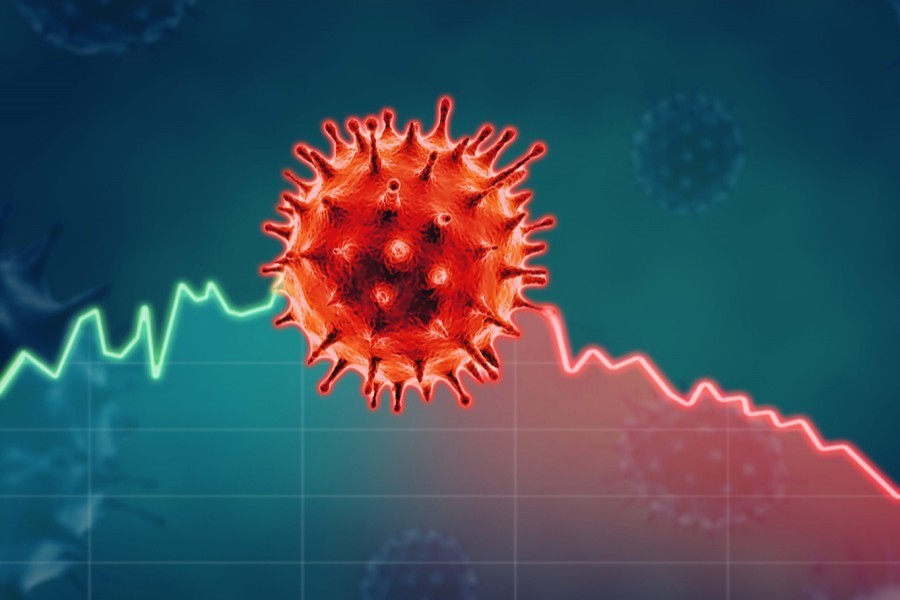Healthcare officials and experts have said despite continued coronavirus onslaughts claiming lives, infection recovery rate in Bangladesh was higher than the global average, a phenomenon they attributed to patients higher immunity because of their age factor.
They said the scenario suggested the coronavirus infection was mostly spreading among younger population with higher immunity, resulting in lower death and higher recovery rates.
The officials said an intensified anti-COVID government campaign simultaneously contributed largely to keep low the fatality rate compared to several other countries, reports BSS on Monday.
The campaign saw recruitment 2,000 doctors and 5,000 nurses for addressing the crisis alone.
“The country now has 66 PCT-labs while we had only one until few months ago . . . this is also a remarkable progress,” said former chief of Directorate General of Health Services (DGHS) Prof Dr Shah Monir Hossain.
According to IEDCR data COVID-19 recovery rate is above 40 percent while among the dead 65 percent aged above 50.
Hossain, who currently is engaged with his former office as a consultant, said Bangladesh remained in good position in in terms of both recovery and fatality rate compared global average.
Over 40 per cent patients already have been cured from the disease and more people were set to recover as their good health conditions and mild infections.
DGHS officials said they assumed the actual recovery rate could be higher than the official data as several COVID-19 patients never reported to doctors.
They said in some cases infected people could not be declared Covid-19 negative immediately through follow up tests once they were detected with infections.
“We hope recovery rate in Bangladesh will be much higher than global average . . . as fatality rate is 1.27 while global average is above five percent,” DGHS additional director general Nasima Sultana told BSS.
She added: “Many patients who recovered staying at their home could not provide their recovery information to DGHS . . . however, from now we are enhancing our follow up efforts and compiling all necessary information”.
Line director of health education Professor Dr Nazmul Islam Munna said early reporting of suspects for infection detection and fitness of patients through physical exercise and regulated diet alongside adherence to anti-COVID-19 guidelines could reduce further the mortality rate.
But he called “don’t care attitude or carelessness” of a section of people including youngsters was a major factor as they draw coronavirus infection themselves and infect others.
“You can see a large number of people, mainly of younger age group are moving around keeping their masks in their pockets or chins, instead of covering their lips and noses, which is a frustrating scene,” he said.
Munna added: “At times their movement crowding public places appears non-essential as well”.
Sultana supplemented the fellow health official saying younger generation was being infected more because of their “non-essential and rampant movement” in many cases.
According to demographic statistics people of younger age comprises majority of the country’s population while over 50 percent COVID-19 appears to be aged from 20 to 40.
World Health Organisation (WHO) assessment found 80 percents COVID-19 cases are mild, 10 to 15 percent moderate while less than five percent are critical.
Bangladeshi healthcare officials said nearly 75 percent COVID-19 patients in the country were taking treatment from their home, and many of them were recovering everyday receiving treatment through hotlines.
Institute of Epidemiology, Disease Control and Research (IEDCR) advisor Mustaq Hossain said many recovery data, however, remain missing for want of proper follow-up activities.
“(But) when death rate is only 1.27 percent, it could generally be assumed that the rest of infected people recovered, he said.
Mustaq said Bangladesh has been able to save many lives as the government expanded healthcare services across the country.
DGHS official Dr. Ayesha Akther said the government completed faster recruitment of extra medical professionals to halt the spread of the pandemic through a massive testing campaign.
“The authorities by now permitted 25 private hospitals and diagnostic centres to supplement the government efforts while a process is underway to allow more such private sector facilities for testing and treatments,” she added.


